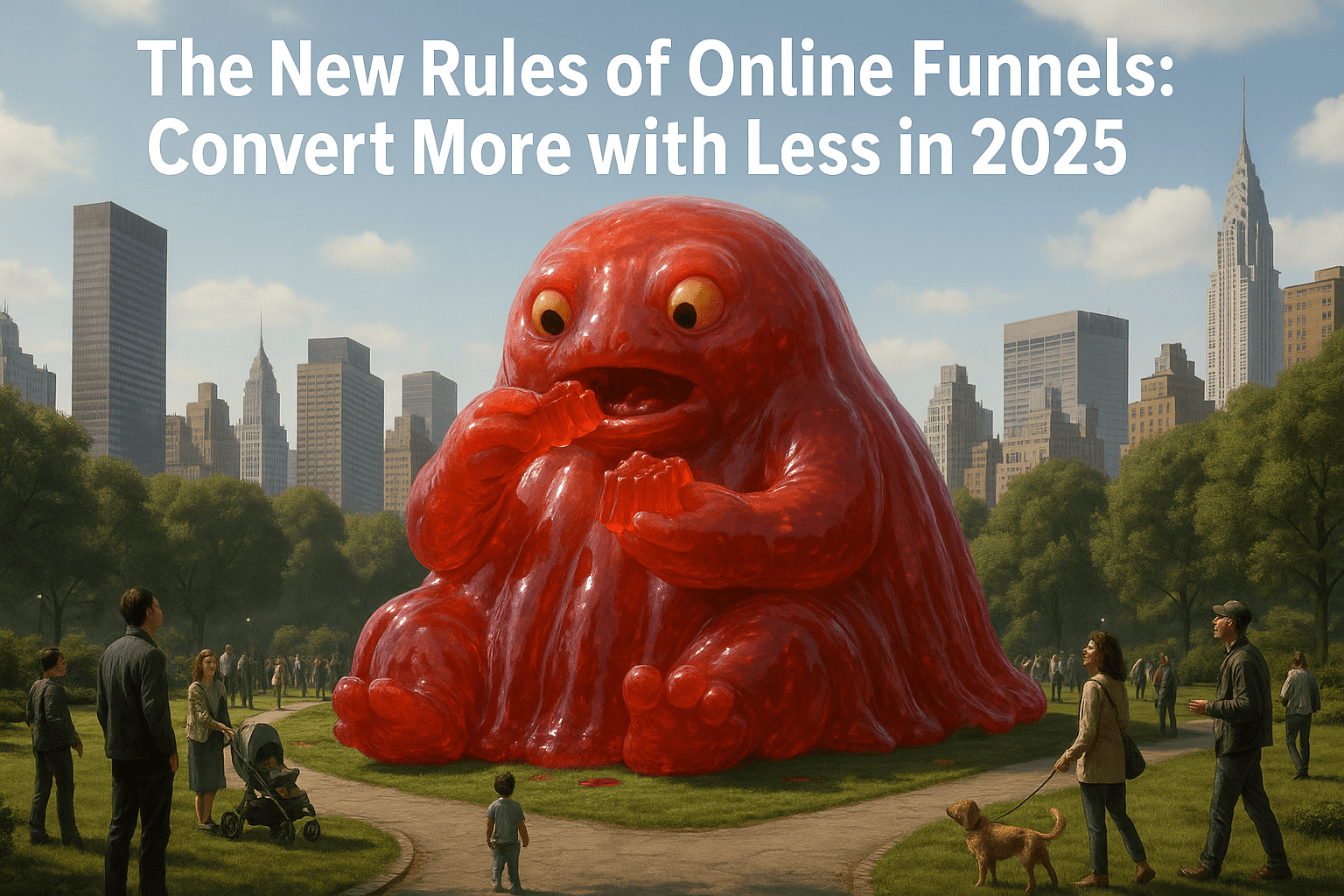
The sales funnel isn’t dead—but it has evolved. In 2025, customer behavior is more dynamic, attention spans are shorter, and trust is harder to earn. That means traditional funnel tactics—like endless email sequences and cold lead magnets—aren’t as effective unless they’re optimized for speed, simplicity, and personalization.
For small business owners and entrepreneurs, the funnel is still a powerful tool—but only when built with the modern customer journey in mind. Here’s how to design a leaner, more effective sales funnel that builds trust fast and moves leads to action without overwhelming them.
1. Build Funnels Around One Clear Offer
Your funnel isn’t meant to showcase everything you do—it should spotlight one high-converting offer that solves a specific problem.
Action Step: Choose one offer to center your funnel around. This could be a service package, course, product, or consultation. Then reverse-engineer the customer journey: What awareness or education do they need before buying?
Pro Tip: Use language from your audience (social media comments, DMs, sales calls) to frame the problem in your messaging. This improves resonance and conversion from the top of the funnel.
2. Simplify Your Entry Point with One Strong Lead Magnet
Lead magnets aren’t about volume—they’re about alignment. In 2025, people are selective about giving away their email. Your opt-in must promise a tangible result fast.
Action Step: Create a single, laser-focused lead magnet tied directly to your offer. Think: cheat sheets, calculators, templates, or mini-audios—not bloated 30-page ebooks.
Stat to Know: According to ConvertKit, opt-ins with clear outcomes convert 47% better than generic “free guides” or newsletters.
3. Focus on a 3-Part Email Nurture Series
Gone are the days of 10-email funnels. The sweet spot is now 3–5 high-impact emails that build trust quickly and guide the lead toward taking action.
Action Step: Build a short sequence with this structure:
- Email 1: Deliver the lead magnet + relate to their pain
- Email 2: Share a transformation story or client win
- Email 3: Introduce your offer with urgency or scarcity
Bonus Tip: Include soft CTAs in every email and one strong CTA in the final message (e.g., “Book your free call,” “Claim your discount,” or “Start your trial”).
4. Use Personalized Landing Pages and Retargeting
The modern funnel isn’t linear. People click, scroll, bounce, come back, and research before buying. You need dynamic tools to re-engage them at every stage.
Action Step: Use tools like Leadpages, Unbounce, or Instapage to create personalized landing pages based on how a user enters your funnel (from an ad, blog, or email). Then run retargeting ads on Facebook and Instagram to bring them back.
Stat to Know: Retargeted visitors are 70% more likely to convert compared to first-time visitors (Criteo, 2024).
5. Make Video the Centerpiece of Your Funnel
Video builds trust, explains complex offers, and increases retention—especially on landing pages and thank-you pages.
Action Step: Record two key videos:
- A 60–90 second explainer video for your sales page
- A thank-you video that sets expectations and pre-sells your offer
Pro Tip: Use Loom or Vimeo to personalize the video experience. Add viewer-specific greetings or client use cases to deepen connection.
Funnels don’t need to be complex. The best funnels today are clear, fast, and focused. They guide the user through a value-first experience and make it easy to say yes. When you simplify your funnel, focus on one offer, and use personalization and video, you create an experience that doesn’t just convert—but creates trust.
Your Move: Audit your current funnel. Remove the fluff. Refine your lead magnet. Rework your nurture emails. Add a video. Make every step intentional. Because a funnel isn’t about complexity—it’s about clarity. And clarity converts.


